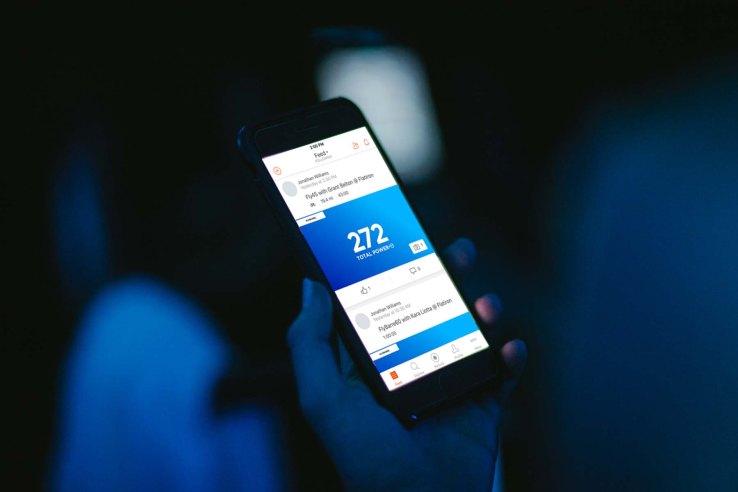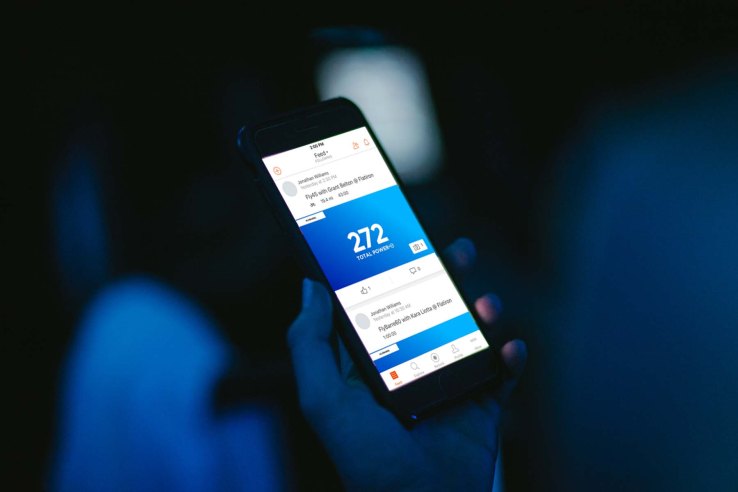

When you walk upstairs at the Strava offices over on Third Street in San Francisco, you’ll find boards as tall as your typical human. They’re covered with images — screenshots of Instagram posts, comments and a whole lot of paper cutouts of other social networks printed onto little sheets — and they served as the launchpad for Strava’s latest product as it tries to continue to be the home for athletes and their activities.
It was a design exercise to discover how athletes were talking about their lives and adventures on platforms that were explicitly not Strava. After all, Strava was a place for activities, and not where you’d talk about the latest biking helmet. Now the design team and Strava hopes it has absorbed and learned everything it can from that kind of behavior and bake it into their own app, creating a space in the home feed where users can talk about the rest of their athletic lives when they aren’t just posting workouts and runs.
They’re called posts, and they now have a home in a feed within Strava alongside those updates about your friends’ latest runs. You might have logged in to Strava to post an activity or run, or maybe so you can quickly see your friends’ updates, but CEO James Quarles hopes now that users will have reasons to come to the app for everything else related to sports and athletics. It seems like a small step, but as something that could accrue even more minutes from an athlete, it brings it closer to being a more robust capital-N Network like many of the household names out there now.
“We don’t want people to misconstrue it as saying we’re trying to become Facebook,” Quarles said. “Sports have been inherently social since way before social networks happened. Its camaraderie, encouragement, and all that happens offline. Were trying to digitize it. We found that when Strava was just activities, people were asking questions in the comments and sharing links and things. That’s a horrible way to have that community content organized. We gave people the ability to make a post, share a photo, or embed information when they’re not active.
Posts are basically an evolution of what Quarles says people are already doing on Strava. But instead of getting their own home on the feed, they end up in comments. Users would post links, questions, and other kinds of content that would end up in a string of comments below an activity — the core unit of information in the Strava app. And because that was so unwieldy, and forced users to bend the app to their desires, a lot of that activity went elsewhere. Like Instagram.
Now there’s a home for all those gear reviews, recipes and potentially mundane life updates to how someone’s feeling that morning when they are recovering from an injury. Posts are for all the other times you aren’t putting up an activity, and they’re designed to span the gamut of what kind of content ends up on Strava. Quarles said that because of Strava’s nice niche in the athletic space, it isn’t necessarily competing with the same networks that athletes have fled to for their content — just giving them the ability to put that content where they originally wanted it.

Since the Strava app aims to be lightweight, that certainly came with some design challenges. One of the longest discussions throughout the development process was where Strava’s posts fell in the length spectrum, so to speak. They could go the Medium route, optimizing to a blank slate and letting users throw out long-form content, or they could optimize for something much shorter like a Tweet. Folenta said the goal was basically about landing somewhere in the middle, making it easy for people to post a photo if they want or just post a link. For example, in the development process, the company decided not to make a title mandatory for the post as it seemed like it was just getting in the way.
“What we learned is that it becomes a barrier to putting a thought out there,” senior product manager Meghann Lomas said. “In our evolution as where we are right now, there’s nothing that’s precluding people. We’ve offered tools to have the shorter form easier. We wanted to not make it seem like a blank word document. But for people who want to do that, they can add a title, they can pour out thoughts out their heart’s content. In terms of prioritizing features to build, we’ve emphasized more on the lighter touch. You shouldn’t feel inhibited.”

Then there’s the entry point. Posts don’t exist as some dramatic button on the center of the screen. There’s no big plus right when you log in to jump straight to adding an update to your feed. Instead, when you tap into a selector where you’d record your activity and you’ll see the option to post. Of course, it would make sense to put an option to create content in a spot where you’re naturally going to go when you’re looking to post content on Strava. In that way, posts aren’t designed to chase the user around — just be where you’d expect them.
You also won’t be bombarded with notifications, senior product designer Tony Folenta said, and the hope is that users will discover the product and how to best use it on their own without major intervention from the actual app. After all, anything else would probably have been an intrusion into the core Strava experience that brought users there in the first place. And if you haven’t logged into Facebook in a while, you can certainly see how annoying those notifications can get over time.
“We wanted to respect the activity above all,” Senior product designer Arlo Jamrog said. “We can’t introduce posts and have it be more prominent than the core experience or the way our athletes are familiar with being active on the platform. That was a huge consideration. We wanted it to feel like a natural extension of the existing product. And we wanted to make it quick and feel lightweight. We didn’t want it to feel like it has a prescriptive behavior.”
During the development of the feed, Strava also “future-proofed” products like posts on the engineering level, Quarles said. The team left plenty of possibilities out of posts to start — it is better to get something in the hands of users and figure out how they’re going to use it in the beginning, after all — and by engineering the cells in the feed to be easily reconfigurable it leaves open the door for Strava to play around with what works and what doesn’t work.
The next step is, naturally, to get it out there and test it. A/B testing is at the heart of optimizing every app, and realistically it’s the user base that discovers the real best use case for an app. That’s pretty much where this project started — they found users bending the app, took a bunch of screenshots to figure out what they were doing, and then tried to morph it into a product. The end result will, as is often the case, probably be quite a bit different than what’s coming out tomorrow, but that’s all part of the process.
“The other nice thing is, we’re at an early stage,” Folenta said. “We built this set of tools, we’re gonna give it to them. If we see people using it in a particular way, we’re gonna keep making it that way better. At this point, it’s, ‘here’s what we think is a gift to our athletes, and hopefully, they enjoy it and use it in new exciting ways’.”

